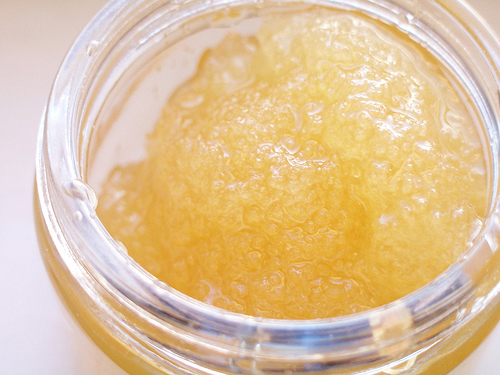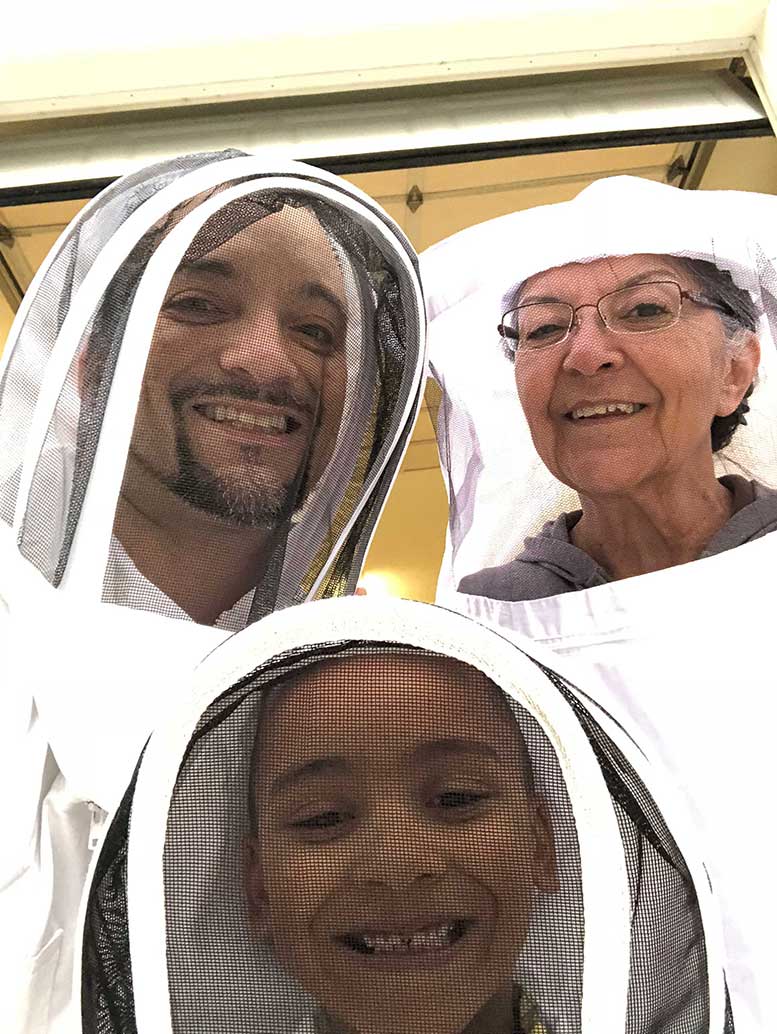- Your cart is empty
- Continue Shopping
Why does honey crystallize?
Why does honey crystallizes? Real Raw Honey Crystallizes

Real, raw honey crystallizes.
So Why does honey crystallize? Crystallization is natural and a sign of being real and truly raw. The crystallization of honey is little understood by the consuming public. Many assume that crystallized honey is adulterated or ‘spoiled.’ This is not so. The crystallization process is a natural and spontaneous process. Pure, raw and unheated honey has a natural tendency to crystallize over time with no effect on the honey other than color and texture. What’s more, the crystallization of honey actually preserves the flavor and quality characteristics of your honey. Many honey users prefer it in this state as it is easier to spread on bread or toast. Indeed, some raw honey recipes can be easier to make with partially or fully-crystallized honey —and, the taste is richer. Some honeys crystallize uniformly; some will be partially crystallized and form two layers, with the crystallized layer on the bottom of the jar and a liquid on top.
Honeys also vary in the size of the crystals formed. Some form fine crystals and others large, gritty ones. The more rapid honey crystallizes, the finer the texture will be. And crystallized honey tends to set a lighter/paler color than when liquid. This is due to the fact that glucose sugar tends to separate out in dehydrating crystals form, and that glucose crystals are naturally pure white. Darker honeys retain a brownish appearance. Hungry for more chemistry? Honey is a highly concentrated sugar solution. It contains more than 70% sugars and less than 20% water. This means that the water in honey contains more sugar than it should naturally hold. The overabundance of sugar makes honey unstable. Thus, it is natural for honey to crystallize since it is an over-saturated sugar solution.
The two principal sugars in honey are fructose (fruit sugar) and glucose (grape sugar). The content of fructose and glucose in honey varies from one type of honey to the other. Generally, the fructose ranges from 30- 44% and glucose from 25- 40%. The balance of these two major sugars causes the crystallization of honey, and the relative percentage of each determines whether it crystallizes rapidly or slowly. What crystallizes is the glucose, due to its lower solubility. Fructose is more soluble in water than glucose and will remain fluid. When glucose crystallizes, it separates from water and takes the form of tiny crystals. As the crystallization progresses and more glucose crystallizes, those crystals spread throughout the honey. The solution changes to a stable saturated form, and ultimately the honey becomes thick or crystallized. The Crystallization of honey is a gift of nature. Get some really raw honey by clicking here


